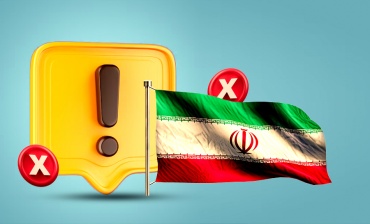The intersection of geopolitics and international diplomacy has positioned the Islamic Republic of Iran as a central player for decades. At the core of Iran’s narrative lies a intricate network of sanctions imposed by various international actors, most notably the United States. These sanctions, implemented with multifaceted political and security objectives in mind, carry consequences that extend far beyond the halls of power in Tehran.
Historical Context:
The relationship between the United States and Iran took a turbulent turn following the 1979 Iranian Revolution. Since then, Iran’s nuclear program, regional activities, and alleged support for designated terrorist organizations have contributed to the complex framework of sanctions.
Key Components of the Sanctions:
Sanctions Pertaining to the Nuclear Program: Iran’s pursuit of nuclear capabilities, particularly its uranium enrichment activities, has been a major source of contention. The signing of the Joint Comprehensive Plan of Action (JCPOA) in 2015 provided temporary relief from some of these sanctions in exchange for limitations on Iran’s nuclear program. However, the U.S. withdrawal from the JCPOA in 2018 led to the reinstatement and even intensification of these sanctions.
Financial and Banking Restrictions: Sanctions have targeted Iran’s central bank and other financial entities, severely limiting their access to the global banking system and foreign reserves.
Oil and Gas Sector: As a significant global oil producer, Iran has faced restrictions on its oil exports, aiming to undermine its primary revenue stream.
Targeting Individuals and Entities: Specific Iranian officials, entities, and sectors have faced travel bans, asset freezes, and other forms of restrictions.
Implications and Effectiveness:
Economic Consequences: The sanctions have significantly curtailed Iran’s economic potential. The oil sector, foreign trade, and currency value have been particularly affected, resulting in inflationary pressures and diminished public revenues.
Humanitarian Impact: While sanctions typically exempt humanitarian goods such as food and medicine, the reality is more nuanced. Banking restrictions have complicated transactions for essential goods, leading to shortages of medicines, medical equipment, and other vital supplies.
Shifting Trade Partnerships: The sanctions have compelled Iran to seek alternative trade partnerships, strengthening ties with countries like China, Russia, and neighboring nations.
Domestic Politics and Public Sentiment: While sanctions have sometimes bolstered hardline factions within Iran, who view them as evidence of Western hostility, they have also contributed to public discontent, especially during times of economic hardship.
Diplomatic Landscape: The sanctions have influenced diplomatic efforts, including negotiations surrounding the JCPOA and recent dialogues. They serve as both a bargaining chip and an obstacle in U.S.-Iran relations.
Conclusion:
The Iranian sanctions exemplify the challenges inherent in utilizing economic measures as instruments of foreign policy. While they have undeniably constrained Iran’s policy options and economic well-being, the ultimate goal of inducing lasting policy changes in Tehran remains elusive. Moreover, the unintended humanitarian consequences raise ethical questions about the prolonged use of broad economic measures.
As the world grapples with the complexities of the Iranian conundrum, the effectiveness of sanctions, their unintended repercussions, and their role within a broader diplomatic strategy will continue to be subjects of intense debate. Striking a delicate balance is crucial, where sanctions achieve their strategic objectives without disproportionately affecting the very population they indirectly aim to assist.
Author: Pooyan Ghamari, Swiss Economist & Visionary







